2017 Superbike Street Shootout
Aprilia RSV4 RR vs. BMW S1000RR vs. EBR 1190RX vs. Honda CBR1000RR vs. Kawasaki ZX-10R vs. Suzuki GSX-R1000 vs. Yamaha YZF-R1
It’s been two years since we summoned together the superpowers of the sportbike world. In that time the Aprilia RSV4 RR, Honda CBR1000RR, Kawasaki ZX-10R, and Suzuki GSX-R1000 have either been heavily revised or completely overhauled. These changes beg a reinspection into the pecking order of world’s premier street-legal superbikes. Can Japan wrest away the literbike crown from the European OEMs, Aprilia and BMW, that have dominated the class since 2010?
2015 Six-Way Superbike Track Shootout
2015 Six-Way Superbike Street Shootout
The last time a Japanese motorcycle won a MO superbike shootout was 2009 ( 2009 Literbike Shootout), with Honda’s CBR1000RR coming out on top. The next year BMW introduced the S1000RR and changed the landscape of top-class sportbikes, winning every shootout it’s been involved until the Aprilia RSV4 seized the crown in 2015. Chief superbike flogger Kevin Duke clarifies the Beemer’s impact in his Best Of 2010 Awards.
2017 Superbike Spec Chart Shootout
“After years of incremental increases in performance among sportbikes, along comes a fresh player to shake things up in the literbike world in a way we haven’t seen for more than a decade when the first-gen R1 debuted,” said Duke.
Following the RSV4’s ascendancy to the superbike bridesmaid in 2015, the RSV4, now equal in power output to the mighty BMW, claimed MO’s Sportbike of the Year award for 2016, and narrowly defeated Kawasaki’s new-for-2016 ZX-10R in our $17,000 Superbike Faceoff. For 2017 the RSV4 returns with improved electronics, which we covered in our First Ride Review last month. Is it enough to keep the new Honda ( 2017 Honda CBR1000RR And CBR1000RR SP Review) and new Suzuki ( 2017 Suzuki GSX-R1000 Review, 2017 Suzuki GSX-R1000R Review – First Ride) at bay?
This shootout outlines how these sportbikes perform in street environments, from city riding to freeway droning, and, the best part, flogging them on some of our favorite twisty roads. Their racetrack prowess will be discussed in an upcoming article.
The results of our testing weren’t unanimous among our cadre of seven testers, so we again had to rely on our comprehensive Scorecard to sort out the differences and distinctions of each bike. Frankly, a consumer could be very happy with any of these adrenaline-producing machines.
Twin Notes
You’ll notice the glaring absence of a Ducati in this shootout. You’re also unlikely to see one in another American-based comparison test, as Ducati hasn’t stocked its U.S. press fleet with any of the big Panigales. It almost seems as if some of Ducati’s American reps might be unwilling to risk the chance of its bikes losing in shootouts. We had a similar problem in our 2015 shootout when Ducati suddenly backed out of our track testing and we scrambled to use a private-owner’s Panigale S instead. That bike finished a strong 3rd in 2015. Another contributing factor could be the long-rumored V-4-engined sportbike expected to debut at the EICMA show this fall, a move that would likely demote the Panigale as the Italian brand’s flagship. It makes us wonder if 2017 could be the the final season of World Superbike racing in which a V-Twin claims a victory…
But a superbike shootout wouldn’t be the same without a V-Twin in the mix, and we were able to source an 1190RX from EBR Motorcycles to provide a deeply booming exhaust note to our mix of four-cylinders. Ironically, EBR’s current owners, Liquid Asset Partners, announced during our testing that it was unable to secure additional investors for EBR, so all of the company’s assets are back up for sale to the highest bidders.
Liquidation Sale On EBR Motorcycles Factory Assets
V-Twins have had a huge influence on superbike racing since the series came online in the 1970s, winning loads of championships for Ducati and inspiring Honda, Aprilia, Suzuki and Bimota to build V-Twin contenders – not to mention driving the actual displacement limit to 1000cc for all bikes, not just the twin-cylinder ones. Suddenly, the V-Twin superbike looks to be joining the endangered-species list.
—Kevin Duke, Editor-in-Chief
Seventh Place: EBR 1190RX – 86.28%
| Categories | EBR 1190RX |
| MSRP | 100% |
| Weight | 96.0% |
| Pounds/HP | 92.9% |
| Pounds/Torque | 100% |
| Engine | 87.1% |
| Transmission | 81.4% |
| Handling | 91.1% |
| Brakes | 69.3% |
| Suspension | 85.7% |
| Technologies | 72.1% |
| Instruments/Controls | 83.2% |
| Ergonomics | 84.6% |
| Quality | 85.7% |
| Cool Factor | 91.1% |
| Grin Factor | 83.2% |
| Overall Score | 86.3% |
Get ’em while they last. With the announcement – untimely delivered while we were out testing these bikes – of EBR’s next demise ( Liquidation Sale On EBR Motorcycles Factory Assets) prices have dropped to an advertised $10k for a new 1190RX. For equity we kept the MSRP of $13,995, but who can deny the allure of such a bargain for 162.3 rear-wheel horsepower?
Boasting a color TFT display and traction control, the EBR is otherwise devoid of electronics. In its streetfighter 1190SX guise, we didn’t mind so much placing it third in our Yet Another Streetfighter Shootout!, but in this group of envelope-pushing superbikes the EBR’s lack of electrons is hard to overlook.
“The platform feels fantastic but the whole package just isn’t as refined as the other bikes, like it’s five years behind the times,” says John Burns. “For me, it’s a raucous modern interpretation of a `90s Ducati 900ss with twice the power. It’s the only Twin here and vibrates a bit more than the others, but always in a really good fuzzy-amp way to me.
Some of us, such as guest-tester and master of the sexual innuendo, Thai Long Ly, found even more reasons to like the discordant V-Twin.
“I love the raw, visceral feel of the motor. Like a thick manly shoulder rub from a homeless bodybuilder, or so I’ve been told,” says Ly. “The EBR rumbles like something this powerful should. Its unrefined nature and unpolished performance is something I can completely identify with. I like it.”
Measured with a 451-pound curb weight, the EBR is the fourth-heaviest bike here, but it sure doesn’t feel like it. Light on its feet with a willing and confident chassis, the EBR was admired by our testers in the twisties.
“I didn’t know if I was going to be a fan of the EBR all that much, but the more I rode it the more I liked it,” says Dirtbikes.com editor Scott Rousseau. “On the street, it feels small and light, and it’s also nice and stable all the way through a corner.”
Conversely, Evans Brasfield noted that “vibration makes it feel unrefined, unfinished. Some people call that character, I just found it mildly annoying. Great sound, though! Opening the throttle releases a bellow that makes up for many of the EBR’s shortcomings.”
Sixth Place: Yamaha YZF-R1 – 88.49%
| Categories | Yamaha YZF-R1 |
| MSRP | 83.8% |
| Weight | 98.2% |
| Pounds/HP | 96.3% |
| Pounds/Torque | 86.7% |
| Engine | 91.6% |
| Transmission | 90.7% |
| Handling | 82.9% |
| Brakes | 87.1% |
| Suspension | 85.0% |
| Technologies | 93.2% |
| Instruments/Controls | 90.0% |
| Ergonomics | 76.4% |
| Quality | 92.5% |
| Cool Factor | 88.2% |
| Grin Factor | 84.6% |
| Overall Score | 88.5% |
A motorcycle’s ergonomics are certainly in the spotlight when conducting a street test, and for the Yamaha its low Ergonomics/Comfort score of 76.43% was a damaging blow to its overall standings. Burnsie was the most vocal among us regarding the R1’s seating position.
“I’m actually a Yamaha guy who owns a 2000 R1, and I continue to not get this one. It’s a great sportbike after you get to where you can unlimber it – but getting there is a literal pain in the ass for 5-foot-8 me,” he says. “Once you make it to S2, though, it’s got great systems integration that rivals the Honda’s, advanced cool techy gauges to play with, awesome suspension and brakes, a great gearbox and the next best engine sound after the Aprilia’s V-4. But it’s the last one I’d pick if I needed to go 400 miles in a day.”
| Curb Weights (full fuel) | |
| Aprilia RSV4 RR | 470 lbs |
| BMW S1000RR | 460 lbs |
| EBR 1190RX | 451 lbs |
| Honda CBR1000RR | 433 lbs |
| Kawasaki ZX-10R | 454 lbs |
| Suzuki GSX-R1000 | 444 lbs |
| Yamaha YZF-R1 | 441 lbs |
The R1 scaled in at the second lightest in this test, which was surprising to our testers who judged its steering to feel heavier than that of the lightweight Honda and others. Two testers had problems coming to terms with R1’s front end, while some others found the brakes at street speeds to be wooden without much feedback.
Outfitted with some of the best electronics available, testers comments varied from praising the Yamaha’s color TFT display to condemning its twitchy throttle response in ride mode A. And while it does have a quick-shifter going up, it lacks an auto-blipping downshifter. Nonetheless, the R1’s transmission was a favorite among a few of us.
“The Yamaha’s crossplane-crank motor does seem to be able to dig into pavement and hook up for strong corner exits,” says Duke, “and it sounds just like Rossi’s bike!” The rest of our testers agreed the sound emanating from the R1 is bested only by the magical V-Four of the Aprilia.
Yamaha built the R1 to be an ultimate track weapon to compete and win in superbike categories around world with little regard to its streetability, and it shows. For the serious performance junkie willing to overlook street shortcomings, the YZF-R1 could be for you. Its sixth-place ranking was a scant 1.5% behind fourth place, and that may very well change when ranked in our upcoming track test.
Fifth Place: Kawasaki ZX-10R – 89.22%
| Categories | Kawasaki ZX-10R |
| MSRP | 85.3% |
| Weight | 95.4% |
| Pounds/HP | 96.3% |
| Pounds/Torque | 85.3% |
| Engine | 88.2% |
| Transmission | 88.2% |
| Handling | 90.0% |
| Brakes | 93.6% |
| Suspension | 90.7% |
| Technologies | 90.7% |
| Instruments/Controls | 86.8% |
| Ergonomics | 89.6% |
| Quality | 90.0% |
| Cool Factor | 84.6% |
| Grin Factor | 86.1% |
| Overall Score | 89.2% |
The current version of Kawasaki’s ZX-10R came to life last year, and while we didn’t host a multi-bike showdown in 2016, we did conduct a two-bike standoff between the Kawi and 2015 superbike-shootout winning RSV4 RR. In that comparison ( The $17,000 Superbike Faceoff) we lamented the fact that the Kawi made less power than the Aprilia, but also that the Kawi doesn’t begin producing serious power until it reaches 8,000 rpm. That critique remains and is largely responsible for the ZX finding itself placed behind the new Suzuki GSX-R1000.
“The Ninja pulls with the ferocity of seven whole gerbils before finally unleashing its steroidal demons somewhere above 7,000 rpm,” says Ly. “Like me in the morning, it takes a while to wake up, though the engine feels great if you’re patient enough to wait for the smooth I-4 to finally find its go.”
Besides its sub-8000 rpm power outage, the Kawasaki garnered few nitpicks other than extra heat around the rider’s feet (especially the right ankle). Its handling was so benign that it drew few comments.
“At first I thought the Kawasaki was slow steering compared to the others,” says Brasfield, “but after spending more time in the saddle, I think it’s more that the ZX just wants to be told what to do. Give it firm input, and it’ll follow your lead. Get wishy-washy or ask it nicely to do something, and it becomes recalcitrant.”
| Observed MPG Your mileage may vary, probably upward | |
| Aprilia RSV4 RR | 33.6 mpg |
| BMW S1000RR | 31.7 mpg |
| EBR 1190RX | 35.0 mpg |
| Honda CBR1000RR | 38.2 mpg |
| Kawasaki ZX-10R | 35.7 mpg |
| Suzuki GSX-R1000 | 36.7 mpg |
| Yamaha YZF-R1 | 31.5 mpg |
| Does anyone buy a superbike based on fuel economy? Some reader always asks, so we log our observed mileage. Keep in mind that our use (flogging, photo passes, etc.) yields worst-case-scenario numbers. Your mileage will be better. | |
Most testers found the Kawi’s ergos to their liking, commenting on the natural-feeling throttle, excellent transmission, and user-friendly electronics. The Ninja is built for excellent track performance while maintaining its social graces when ridden at street-legal speeds on public roads.
“Amazingly panoramic mirrors,” says Editorial Director Sean Alexander. “Even this one fat guy I know can see around and behind himself on the ZX-10R, no side-shifting or elbow lifting required. Hey it’s the little things.”
Rousseau agrees, saying “The Ninja’s ergos are similar to the CBR’s in terms of feel if not outright dimensions. I think the Kawasaki might even have the edge on this field in overall comfort when in sport-touring mode. About the only thing I noticed was that the bar position that is so comfy over the long haul tended to make it a little harder to crank the bike into corners.”
Fourth Place: Suzuki GSX-R1000 89.95%
| Categories | Suzuki GSX-R1000 – 89.95% |
| MSRP | 93.3% |
| Weight | 97.5% |
| Pounds/HP | 92.9% |
| Pounds/Torque | 91.2% |
| Engine | 92.5% |
| Transmission | 85.4% |
| Handling | 91.1% |
| Brakes | 90.7% |
| Suspension | 90.4% |
| Technologies | 86.1% |
| Instruments/Controls | 88.6% |
| Ergonomics | 87.1% |
| Quality | 89.3% |
| Cool Factor | 85.4% |
| Grin Factor | 87.5% |
| Overall Score | 90.0% |
Scoring among the Kawasaki, Suzuki and Yamaha is the epitome of splitting hairs as the three are only separated by 1.46%. In fact, the spread between the Yamaha and the Kawasaki is a scant 0.73%, while the difference between the Kawi and Suzuki is the same scant 0.73%. When you remove objective scoring (price, weight, power) from the results, there exists only a 0.03% difference in subjective scoring between the Kawasaki and Suzuki in favor of the Ninja. And While the Suzuki and Kawasaki performed similar dyno runs, it’s the mid-range grunt of the Suzuki that pushed its engine performance score well above the Kawi’s (92.5% vs 88.2%).
“The motor feels great down low and the bike pulls hard for an inline-4,” says Thai. “The engine is a bit vibey around 5k and doesn’t start smoothing out until you’ve swept past 6k, where it keeps pulling and pulling until redline.”
It may be a new model GSX-R, but one thing it hasn’t lost is that traditional, familiar, comfortable sitting in, not on top of, feeling Gixxers are famous for. It’s one of the most streetable seating positions in sportbikedom that provides not just rider comfort, but also confidence in the bike’s ability to quickly navigate a stretch of canyon switchbacks.
“The Suzuki has that sneaky trait shared by a lot of great and highly effective motorcycles: it begins to disappear beneath you as you get on with the business of riding,” says Alexander. “That may sound a little boring, but it’s high-praise indeed.”
It needs mentioning that at $14,999 the base model GSX-R1000 is the price leader among the group (not including the liquidized EBR). Its MSRP is $1,400 less than the next more expensive bike, the ZX-10R ABS KRT Edition at $16,399 (It retails for $16,099 with ABS; $1,000 cheaper without). Had we the non-ABS standard ZX, the Suzuki would still have won on the Scorecard, albeit by an even closer margin, but then, out of fairness, we would have to have used the non-ABS GSX-R that retails for $14,699, taking things back to where they began.
2017 Suzuki GSX-R1000R Review – First Ride
Lacking the quick-shifter of the R model didn’t hamper the standard Gixxer’s transmission, as most testers praised its slick shiftability and excellent slipper clutch. However, there was a noticeable abruptness in throttle response when set to A mode; changing it to B mode removes the harshness while not restricting top-end power.
“The Gixxer’s suspension is very good considering the bike’s price,” says Duke. “Despite the really choppy road surface climbing up Palomar, the bike’s wheels exhibited no chatter.”
While attractive in its MotoGP livery, the GSX-R1000 did suffer a case of banality noted among more than one tester, but we’ll use Thai’s colorful description to surmise the group’s general opinion.
“This is a great bike that does everything extremely well,” he says. “It’s the super cute girl that studies hard, has a great body, is loyal and wants to be your girlfriend. But you’re just not into her. And that’s too bad. Because it’s really an amazing bike that handles like butter. I thoroughly enjoyed riding the Gixxer for no other reason than the bike hauls ass and feels easy doing so. But as a streetbike, I need more bang than bland.”
Third Place: Honda CBR1000RR – 91.84%
| Categories | Honda CBR1000RR |
| MSRP | 80.5% |
| Weight | 100% |
| Pounds/HP | 92.9% |
| Pounds/Torque | 92.9% |
| Engine | 92.7% |
| Transmission | 95.0% |
| Handling | 97.9% |
| Brakes | 95.0% |
| Suspension | 92.5% |
| Technologies | 91.1% |
| Instruments/Controls | 87.1% |
| Ergonomics | 91.1% |
| Quality | 90.4% |
| Cool Factor | 86.8% |
| Grin Factor | 92.1% |
| Overall Score | 91.8% |
It was years in the making, but finally, at last, a new CBR1000RR has arrived with an electronics package from the 21st century. The Honda impresses simply lifting it off its sidestand. At 433 pounds full of fluids, the standard model CBR1000RR beats the next closest curb weight of the Yamaha by eight pounds, and its own SP model from two years ago by the same amount.
Eight pounds may not seem like much until you ride the Honda. The CBR’s light weight and mass centralization make it as light on its feet as a ballet dancer, able to carve a tight set of switchbacks with Ginzu efficiency. Reaching deeper into the bag of cliches, the CBR1000RR is a liter bike with the handling proficiency of a CBR600RR.
“I love it. Hold up… let me rephrase that. I f’ckin love it!” says Thai. “This bike is light, fast and fun. The motor makes far more power on the butt dyno than the DynoJet ever acknowledged, but who cares. The bike just rips. I’m a small guy and this bike feels small to me. Like a 600 that can drop the hammer of the gods with cat-like stealthiness when scratched.”
Ah yes, the dyno, the elephant in the room. Outputting 153.2 ponies at 10,600 rpm is embarrassingly low among this group of superbikes. Until, however, you factor in the CBR’s weight. Compared to the most powerful, as well as heaviest two bikes, the Aprilia (470 pounds) and BMW (460 pounds), the Honda is pushing 2.8 pounds per horsepower to the their 2.6 pounds per horsepower. Certainly adds up, but when looking at torque, the Honda has the advantage by pushing 5.6 pounds per pound-foot compared to 5.7 pounds for the BMW, and 6.1 pounds for the Aprilia. It’s the light-makes-right scenario, and it helped earn the Honda a low 90s percentage on the Scorecard, narrowly missing out on second place in the shootout.
“At one point on tight Mt. Palomar I thought, ‘Dang I love this nimble and midrange-intensive Aprilia,’ only to look down and realize I was on the CBR,” says Burnsie.
The optional up-and-down quickshifter (a $579.95 option) received high praise from all testers, and the transmission scored resoundingly well on the Scorecard, but a couple of us noted occasional false neutrals. Maybe it was user error, but a crash by Guy Martin at IoMTT hints at there being a problem with the Honda’s transmission ( Guy Martin’s lucky escape | Isle of Man TT 2017).
Otherwise, the Honda was praised for having the smoothest running engine of the bunch, exceptional user-friendliness, fantastic feel and braking performance from its Tokico calipers, and possibly the best ergonomics.
“The Honda has the second best riding position for the street, straddling the razor’s edge of sporting purposefulness with real-world comfort,” says Evans. “Give it a cruise control, and it’d challenge the BMW for the best all-around performance seat.”
Second Place: BMW S1000RR – 92.06%
| Categories | BMW S1000RR |
| MSRP | 73.7% |
| Weight | 94.1% |
| Pounds/HP | 100% |
| Pounds/Torque | 91.2% |
| Engine | 94.6% |
| Transmission | 93.6% |
| Handling | 93.2% |
| Brakes | 93.6% |
| Suspension | 93.9% |
| Technologies | 98.9% |
| Instruments/Controls | 88.9% |
| Ergonomics | 91.8% |
| Quality | 92.9% |
| Cool Factor | 89.3% |
| Grin Factor | 92.1% |
| Overall Score | 92.1% |
Defeating the Honda by a narrow victory (0.22%) says a lot about the Honda, because the BMW had to cheat to get here. Sure, the Scorecard punished the BMW for being the most expensive bike in the test ($1,600 over the Honda’s as-tested price of $17,378) but it wasn’t enough to upset the podium.
What those extra greenbacks get you are forged wheels and electronic semi-active suspension. If you can afford the options they’re worth their asking price because nothing beats pushbutton suspension on the street, and lighter wheels are perhaps the best way to elevate a bike’s performance. And even if we could get a standard-issue S1000RR for its $15,495 MSRP, it most likely still would have come in second place in the shootout, if not first.
“Now I see what the fuss is all about,” says Thai. “This bike just does it all, and does it all well. It’s the sandals of superbikes, rolling over everything with the nonchalance usually found in Range Rovers. The motor makes power everywhere. Over here. Over there. Under that. Behind this. Look anywhere and the bike just pulls and pulls like two fistfuls of hair in a drunken ladies’ night bar fight.”
Weighing 460 wet pounds, you’d expect the BMW to be noticeably slower to transition, but it’s simply not the case. Credit the lightweight forged aluminum wheels that allow quick transitions. The BMW is as nimble as the Honda while also exhibiting more stability in fast sweepers. About the only time you feel the Beemer’s heft is when picking it up off its sidestand. BMW engineers have also perfected the bike’s electronics package with an up-and-down quickshifter that works well at any speed in nearly any situation.
“I’ve had the good fortune to ride every generation of the S1000RR, and it just keeps getting better all the time,” says Rousseau. “My only gripe is that there’s still quite a bit of vibration that seeps through to the S1000RR’s handlebars, which limits the fun factor on longer rides.”
Now the elder member of the superbike class, the BMW S1000RR is aging like Valentino Rossi; it may not dominate the way it once did, but it’s always running near the front and remains popular among superbike fans.
“I think the BMW may be the best all-around bike here,” says Brasfield (although he scored it behind the Aprilia). “The engine is ready whenever you need it. The suspension rocks. The brakes are bulletproof. There’s a reason why the S1000RR is always in the running in our superbike shootouts.”
First Place: Aprilia RSV4 RR – 93.78%
| Categories | Aprilia RSV4 RR |
| MSRP | 82.3% |
| Weight | 92.1% |
| Pounds/HP | 100% |
| Pounds/Torque | 85.3% |
| Engine | 96.4% |
| Transmission | 95.4% |
| Handling | 94.6% |
| Brakes | 94.6% |
| Suspension | 91.1% |
| Technologies | 98.6% |
| Instruments/Controls | 91.8% |
| Ergonomics | 90.0% |
| Quality | 93.6% |
| Cool Factor | 98.6% |
| Grin Factor | 98.6% |
| Overall Score | 93.8% |
Until our track test results are calculated, the Aprilia can’t officially claim back-to-back championships, but it is the winner of this year’s superbike street test. Two years ago it was the Aprilia’s bump in horsepower that put it on equal footing with the BMW. This year it’s the bike’s upgraded electronics (including cruise control and cornering ABS) that helped keep the RSV4 on top of the superbike street heap.
The voting wasn’t unanimous, with one tester (me) choosing the BMW over the Aprilia as the best overall bike on the street. It’s my opinion that my fellow MOrons allow their emotions to cloud their objectivity, drunk on the sound of Aprilia’s V-Four, but maybe that’s more representative of how people purchase motorcycles, emotion trumping practicality.
Burnsie explains his disaffection for the BMW here: “Like being suckled by a Valkyrie, you get nutrition but not quite love, no emotional attachment.”
Like the BMW, but more so by 10 pounds, the Aprilia is heavy – heaviest of the group – but it doesn’t adversely affect the bike’s handling. Sure, it would accelerate even better were it 30 pounds lighter, but the RSV’s chassis is as good as it gets when it comes to enabling motorcyclists to ride faster.
“The ergos are aggressive, the seat is hard and unforgiving, but all this does is help the world-class chassis communicate every nook and cranny the asphalt has to offer when you’re pitched sideways at speed,” says Thai. “Telepathic is how I’d describe the handling. Just get on it and go. Fast.”
Amazingly, the RSV RR achieves this level of telepathy without resorting to forged wheels and electronic suspension, although it’s Sachs units were highly praised, but even more so were the Aprilia’s electronics.
“Independent electronic controls is the way rider aids should all be,” says Duke. “Wheelie control needn’t be tied to traction control.”
“The Aprilia’s throttle response is spot-on, and its electronic shift assist is super precise – it was my favorite transmission of the group,” adds Rousseau.
Besides being heavy, the physicality of the RSV is small, with most testers commenting on its diminutive dimensions and narrow-between-the-knees feel. Like descriptions for the sound of the Aprilia, we’ve also run out of complimentary phrases for Brembo M50 calipers, which the RSV4 is now outfitted. They’ll remain the benchmark in braking power and feel until something truly better comes along.
“After climbing off the cruel-shoes R1 and onto the Aprilia for the first time, finally I can sit up comfortably and cruise along – and now with cruise control even!” says Burnsie. “This one totally refutes the R1’s insistence that you have to suffer for your sportbike pleasure. It’s actually comfortable and goes like stink. I’d ride it to San Francisco in a heartbeat.”
Here’s Sean Alexander, in a rare moment of emotional transparency, summing up the romance novel that is the Aprilia RSV4 RR.
‘It’s everything. It’s the bike to buy, it’s the bike to date, it’s the bike to marry, and it’s the bike to run-away with… because it certainly runs away with all of our hearts.”
Awww. And Sean wasn’t the only one. The words lust, sex, love, and sublime were used on multiple occasions in the notes of all testers. How can anyone argue with that?
Look soon for our track shootout that’ll rank each bike according to its racetrack performance, followed by the overall selection of our 2017 superbike shootout champion.
Hover over to see the full scorecard
2017 Superbike Street Scorecard | |||||||
|---|---|---|---|---|---|---|---|
| Aprilia RSV4 RR | BMW S1000RR | EBR 1190RX | Honda CBR1000RR | Kawasaki ZX-10R | Suzuki GSX-R1000 | Yamaha YZF-R1 | |
| MSRP | 82.3% | 73.7% | 100% | 80.5% | 85.3% | 93.3% | 83.8% |
| Weight | 92.1% | 94.1% | 96.0% | 100% | 95.4% | 97.5% | 98.2% |
| Pounds/HP | 100% | 100% | 92.9% | 92.9% | 96.3% | 92.9% | 96.3% |
| Pounds/Torque | 85.3% | 91.2% | 100% | 92.9% | 85.3% | 91.2% | 86.7% |
| Total Objective Scores | 89.0% | 87.8% | 97.5% | 91.1% | 90.5% | 94.3% | 91.2% |
| Engine | 96.4% | 94.6% | 87.1% | 92.7% | 88.2% | 92.5% | 91.6% |
| Transmission | 95.4% | 93.6% | 81.4% | 95.0% | 88.2% | 85.4% | 90.7% |
| Handling | 94.6% | 93.2% | 91.1% | 97.9% | 90.0% | 91.1% | 82.9% |
| Brakes | 94.6% | 93.6% | 69.3% | 95.0% | 93.6% | 90.7% | 87.1% |
| Suspension | 91.1% | 93.9% | 85.7% | 92.5% | 90.7% | 90.4% | 85.0% |
| Technologies | 98.6% | 98.9% | 72.1% | 91.1% | 90.7% | 86.1% | 93.2% |
| Instruments/Controls | 91.8% | 88.9% | 83.2% | 87.1% | 86.8% | 88.6% | 90.0% |
| Ergonomics | 90.0% | 91.8% | 84.6% | 91.1% | 89.6% | 87.1% | 76.4% |
| Quality | 93.6% | 92.9% | 85.7% | 90.4% | 90.0% | 89.3% | 92.5% |
| Cool Factor | 98.6% | 89.3% | 91.1% | 86.8% | 84.6% | 85.4% | 88.2% |
| Grin Factor | 98.6% | 92.1% | 83.2% | 92.1% | 86.1% | 87.5% | 84.6% |
| Overall Score | 93.8% | 92.1% | 86.3% | 91.8% | 89.2% | 90.0% | 88.5% |
A former Motorcycle.com staffer who has gone on to greener pastures, Tom Roderick still can't get the motorcycle bug out of his system. And honestly, we still miss having him around. Tom is now a regular freelance writer and tester for Motorcycle.com when his schedule allows, and his experience, riding ability, writing talent, and quick wit are still a joy to have – even if we don't get to experience it as much as we used to.
More by Tom Roderick



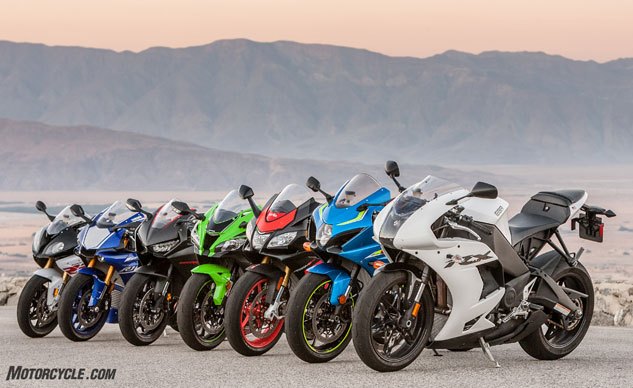
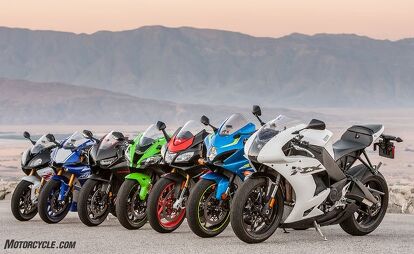





































































































































































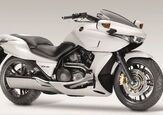
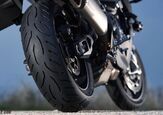
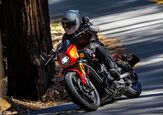
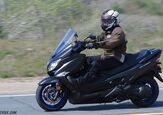
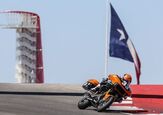
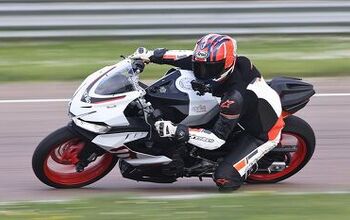
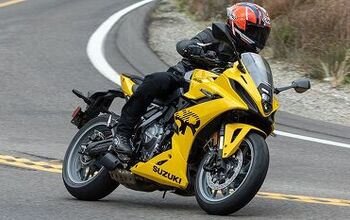

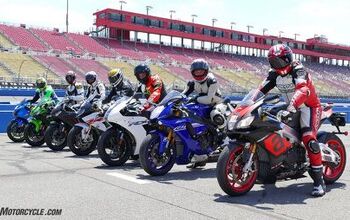
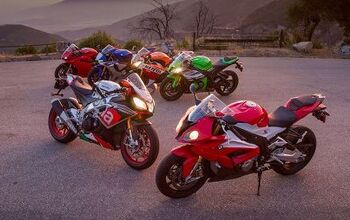
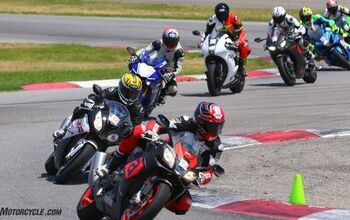
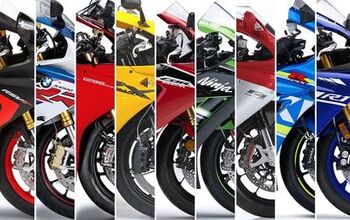
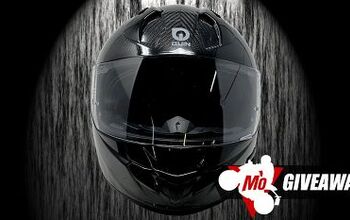
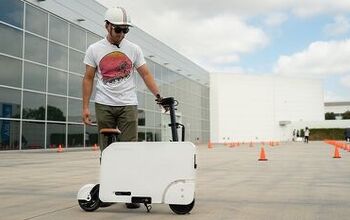
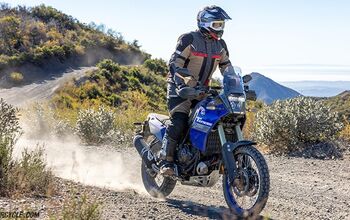
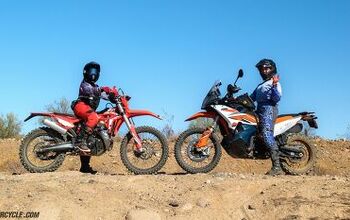
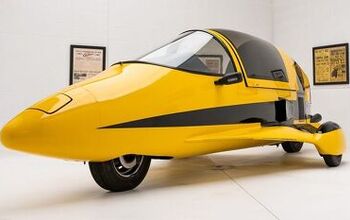
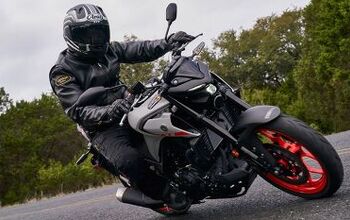
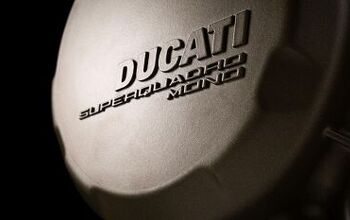
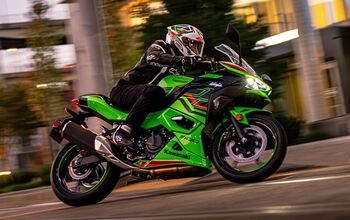
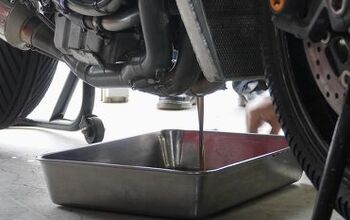
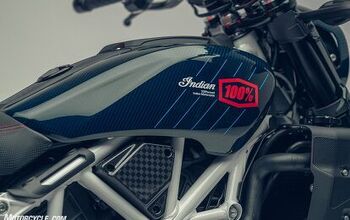
Comments
Join the conversation
Great to see Aprilia winning another shootout, new Tuono V4 wan MCN shootout and now RSV4 RR won here. Excellent. Love Aprilias
I love how these magazines and all motorcycle review companies dyno all their bikes but don't give you the true story. The bmw and aprillia are the least restricted stock, therefore produce the most HP. It's hard for most people to understand how it all works but the gsxr1000 is the MOST restricted stock bike. At 11,000 the throttle blades close to 70% which is why you see the graph just fall off at 11,000. Just by getting the ECU flashed and derestricting it you will make 180 HP with everything else stock (opening the throttle to 100%). Go educate yourselves before listening to these magazines. It's not all what they make it seem. All the other japaneese bikes are pretty restricted too, just look at all their dyno graphs. The all close their throttle blades a certain ammount up top in the rev range, except the Honda. Honda just still sucks 😂😂.
Anyway, my point is the Gixxer is actually very very strong! Its power is right there will the s1000rr. Search brock Davidson gixxer build on YouTube and youll see, the graph is almost identical to the BMW. The s1000rr is restricted for 1 - 3 gears. 4th through 6th they are not (usually 5th gear dyno pulls so it's getting 100% throttle, which is why it's producing 177 hp). Check brentune.com if you dont believe me. Their flash for s1000rr derestricts 1 - 3rd gear..
Flashing your ECU has nothing to do with tuning either, all it does is derestrict everything. So you get to see what these motors can actually produce! And they are all very similar in their power output, except the honda. They are still down like 25 HP..
Hope this help people understand why the bmw and aprillia seem to be so much more powerful than the rest, they AREN'T!